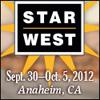 |
ClouT 3i Infotech's Testing Platform Enterprise
Video
Infotech is a global Information Technology company committed to Empowering Business Transformation. Our Independent Testing and Compliance Business [ITCB] became the world's first true testing platform in 2011 -- ClouT™
|
John Caymans, Hitachi Data Systems
|
 |
TOSCA OneView
Video
End to end testing for 21st century business applications (multiple technologies). Rapid test automation for agile software development teams. Test case design as the way to cost effective regression test sets.
|
Anastasios Kyriakopoulos, Tricentis
|
 |
Software Testing Using Microsoft Visual Studio Test Professional
Video
Help simplify the entire development process, from design to deployment. Bring a vision to life using powerful prototyping, modeling, and design tools. Work more efficiently with integrated testing and debugging tools that enable delivery of high-quality solutions.
|
Charles Sterling, Microsoft
|
|
|
I'm Going Mobile: Testing Mobile Applications for Fun and Profit
Video
In this lightning talk from STAREAST 2011, Jonathan Kohl discusses testing mobile software and takes a look at some of the differences between mobile and traditional software.
|
Jonathan Kohl, Kohl Concepts Inc.
|
|
|
The Myths of Rigor We hear that more rigor means good testing and, conversely, that less rigor means bad testing. Some managers-who've never studied testing, done testing, or even "seen" testing up close-insist that testing be rigorously planned in advance and fully documented, perhaps with tidy metrics thrown in to make it look more scientific. However, sometimes measurement, documentation, and planning don't help. In those cases, rigor may require us not to do them. As part of winning court cases, James Bach has done some of the most rigorous testing any tester will do in a career. James shows that rigor is at least as dangerous as it is useful and that we must apply care and judgment. He describes the struggle in our craft, not just over how rigorous our processes should be, but what kind of rigor matters and when rigor should be applied.
|
James Bach, Satisfice, Inc.
|
|
|
Agile Testing: Uncertainty, Risk, and How It All Works Teams that succeed with agile methods reliably deliver releasable software at frequent intervals and at a sustainable pace. At the same time, they can readily adapt to the changing needs and requirements of the business. Unfortunately, not all teams are successful in their attempt to transition to agile and, instead, end up with a "frAgile" process. The difference between an agile and a frAgile process is usually in the degree to which the organization embraces the disciplined engineering practices that support agility. Teams that succeed are often the ones adopting specific practices: acceptance test-driven development, automated regression testing, continuous integration, and more. Why do these practices make such a big difference? Elisabeth Hendrickson details essential agile testing practices and explains how they mitigate common project risks related to uncertainty, ambiguity, assumptions, dependencies, and capacity.
|
Elisabeth Hendrickson, Quality Tree Software, Inc.
|
|
|
Better Software Conference 2009: A Software Quality Engineering Maturity Model You are probably familiar with maturity models for software development. Greg Pope and Ellen Hill describe a corresponding five-stage maturity model for software quality-not just testing-which addresses the challenges faced by organizations attempting to improve the quality of their software. How do you go about transforming your organization to improve software quality in today’s better, cheaper, faster world? Greg and Ellen present the different maturity levels of software quality organizations: (1) the whiner or know-it-all phase, (2) writing documents phase, (3) the measure the process phase, (4) the measure-based improvements phase, and (5) the tools and process automation phase. Learn how to recognize the signs of each maturity level, where and how to start the quality improvement process, how to get buy-in from developers and management, and the tools to predict and measure software quality.
|
Gregory Pope, Lawrence Livermore National Laboratory
|
|
|
The Complete Developer With the global availability of talented development people there is a growing trend toward the commoditization of software development. No longer is it enough to simply be a developer with knowledge of specific languages or algorithms in order to maintain your competitive edge in the marketplace. To compete, you must become a complete developer-someone who can, for example, write some code in the morning and in the afternoon update the requirements Wiki with the results of the latest customer review meeting with your marketing team. This talk explores what it takes to be a genuinely valuable complete developer in today’s world of agile development, outsourcing, globalization, and an increasingly complex business environment.
|
Luke Hohmann, Enthiosys, Inc.
|
|
|
Patterns, Influence Strategies, and Stone Age Legacies Struggling to help your team or organization become more innovative? Have great ideas but can't seem to get them off the ground? We all try to influence others, whether we want to move our department to a better development method or suggest a Friday night movie for the family. We discover new ideas to take back to our workplace but then struggle to make something happen. How can we successfully influence change? From her latest book Fearless Change:
|
Linda Rising, Specialist
|
|
|
Test Driven Development - It's Not Just for Unit Testing Test-driven development (TDD) is a new approach for software construction in which developers write automated unit tests before writing the code. These automated tests are always rerun after any codes changes. Proponents assert that TDD delivers software that is easier to maintain and of higher quality than using traditional development approaches. Based on experiences gained from real-world projects employing TDD, Peter Zimmerer shares his view of TDD's advantages and disadvantages and how the TDD concept can be extended to all levels of testing. Learn how to use TDD practices that support preventive testing throughout development and result in new levels of cooperation between developers and testers. Take away practical approaches and hints for introducing and practicing test-driven development in your organization.
|
Peter Zimmerer, Siemens
|

